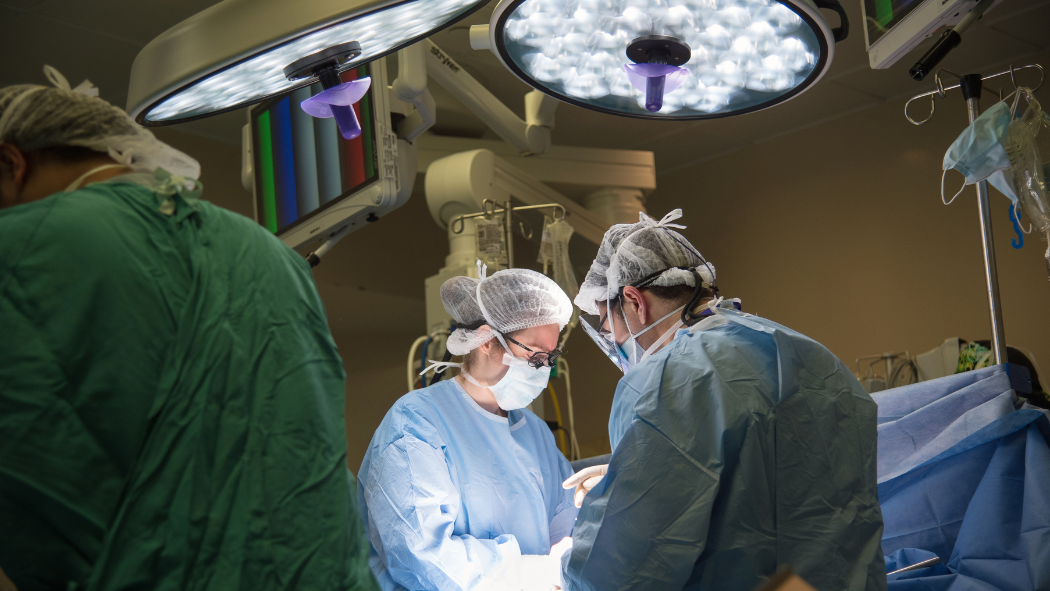
December 22, 2023
LHSC is less than 1,400 cases away from clearing an equivalent volume of cases that were added to the surgical backlog during the pandemic period.
At various points during the pandemic, Ontario hospitals were required to limit surgeries for urgent and emergent cases only, which over time significantly added to the province-wide increase in patients waiting longer than their access target for surgery.
What is a surgical access target?
Priority levels and target wait times for surgery in Ontario are set by surgeons, specialists and health care administrators across the province, based on clinical evidence, to guide treatment decisions and to improve patient access and outcomes. A surgical access target is the recommended maximum number of days between deciding on surgery and the date of surgery. The target is defined by the procedure and the priority level assigned by the surgeon. Patients waiting for surgery who have waited for longer than the target number of days have a wait time that is over target.
What is LHSC’s current level of cases over access target?
From a peak in March 2022 of more than 5,000 cases that were over target while waiting for surgery, we have since reduced this by 1,633 cases to 3,393 over target cases as of the end of November 2023.
How did LHSC achieve this?
Once we were able to resume non-urgent, non-emergent surgeries, LHSC kept a constant focus on increasing surgical volumes in a safe and gradual manner that ensured we still had the ability to respond to a sudden surge in COVID-19 patients requiring acute care. As waves of the pandemic continued, working toward the safe resumption of our pre-pandemic surgical volumes was an important first step in moving through the cases that were delayed by the pandemic, while addressing new patient cases every day.
Since that time, we have tried to do everything we can to optimize our existing resources. This has included:
Surgical smoothing (more evenly distributing non-urgent, non-emergency procedures across the weekly OR grid) and completion of a waitlist validation initiative allowed us to better prioritize scheduling within our surgical grid for those patients who faced some of the longest waits due to the impacts of the pandemic. Addition of incremental time to our surgical grid with increased staffing to support an additional 2,020 hours of operating room time in this fiscal year. On average, LHSC has been able to run a greater number of operating rooms each day than we were able to support pre-pandemic. This is due to efficiencies gained from surgical smoothing, as well as better insight into hospital occupancy and predicted average length of stay. Opening of LHSC’s Nazem Kadri Surgical Centre – our innovative off-campus ambulatory surgical centre – which has added capacity for another 1,700-1,900 surgical cases per year that are over and above our pre-pandemic volumes. These are lower-risk, lower acuity surgical cases which would have previously been completed within our main ORs. This frees up capacity in the main OR for higher acuity cases.
What makes this impactful?
Beyond the fact that LHSC has been able to make significant headway in terms of getting patients who have been waiting for the surgical care they need, we’ve been able to do so within the physical constraints of our main operating room spaces, in the face of continued human health resource challenges, and while maintaining our obligation to support urgent and emergent cases. While the improvement work continues, this represents a tremendous effort by so many members of Team LHSC.
As well, when considering impact, it is important to factor in the backlog (patients waiting over their access target) volume that was in place prior to the start of the COVID-19 pandemic. As of March 1, 2020, LHSC had a surgical backlog of 2,022 cases. When we take this volume into account, the reduction is even more impactful, as we are now less than 1,400 cases away from clearing an equivalent volume of cases that were added to the surgical backlog during the pandemic period.
Regardless of how the data is segmented, this reflects tangible progress that we hope assures our community of our laser-focus on finding efficiencies and optimizing the resources we have in place within our surgical program and beyond.
What is next?
Future optimization work on our surgical grids is planned to begin shortly. This work will include the development of a perioperative dashboard and the launch of a same-day admit algorithm that will allow us even greater insight into our data to ensure that clinic capacity is right-sized to the surgical grid.
The cumulative goal of our continued improvement efforts is to enable more patients to receive surgical care in a timely manner.